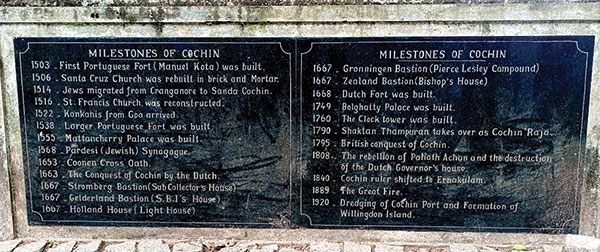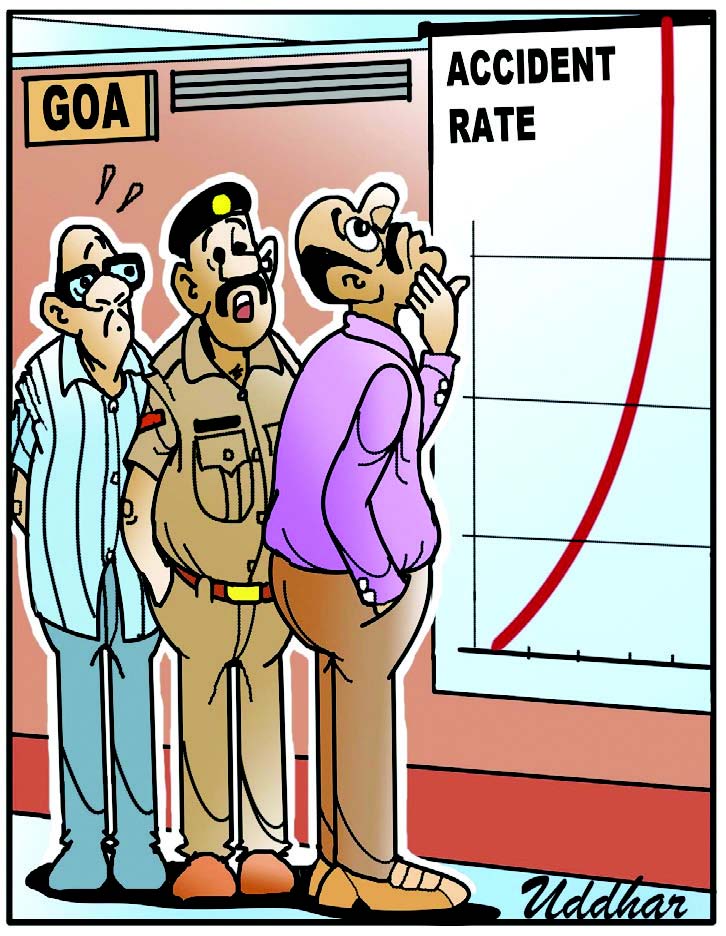
Visitação B. Monteiro
Goans have had a long history of emigrations, even before the Portuguese landed in Goa. Goans themselves have been immigrants, who came here from various parts of the then known world.
In this article I would like to focus on the peculiar type of migrations that Goans undertook towards the south of India, mainly Karnataka (Mangalore, Shimoga) and, in particular, Kerala. The reason behind this is that, of late, there have been concerted efforts on the part of some elements who, with a well-known agenda, are found time and again focusing on conversion and inquisition as the main causes of Goan migration. We constantly hear that “they all migrated because of the conversion and inquisition” and this is being blown out of proportion by the media, creating thereby a lot of misunderstanding in the minds of the people and leading them to believe that the statement is nothing but true. The fact is that Goa’s history has been written mainly by the upper caste people and when such people write Goa’s history it is mainly from the standpoint of their caste.
I have been studying this matter for some years and have travelled extensively to Kerala and Karnataka to find out the real causes behind Goan migrations towards the south. If one looks at history, one will find, that through the centuries the western coast of India was in trade relations with Arabs, Jews, Chinese, etc. However, a particular group of traders from Goa, the gaud saraswat brahmins (GSBs) were found to be doing trade in Kerala since the early 13th century AD. At this point of time, we find some Goan Pais, Prabhus and Kinnis (Kennis) flourishing in Kerala. They could not have reached there because of conversion and inquisition! Goans in fact have been moving to Kerala through several migrations since the 13th century and are today settled in nearly 200 villages in Kerala.
In his book, saraswats in Kerala history, n. Purushothama Mallaya writes that there was a huge Goan migration to Kerala in 1294 —- over two centuries before the arrival of the Portuguese in India —- when Allaudin Khilji conquered Deccan and Goa and temples and houses were pillaged and plundered. Simultaneously, according to the same Mallaya, fierce religious disputes took place between Goan Vaishnavites and Shaivites. Both these factors contributed to this first massive migration of Goans to distant Cochin in Kerala. They settled in and around the port of Koddungaloor together with the kunbis, bonded labourers they took along with them. In 1343, when the catastrophic floods of the rivers Pamba and Peryar destroyed the Koddungaloor port town, changing totally its geography, with the consequent formation of the Vipeen Islands, many saraswats and kunbis settled themselves on these islands.
The second mass migration to Kerala took place in 1522, twelve years after the arrival of the Portuguese in Goa. This migration has merited to be recorded in Cochin on a huge granite slab titled ‘milestones of Cochin’ (see picture). One finds the following words engraved there: 1522 – konkanis from Goa arrived. This must have been indeed a heavy migration, to deserve a mention on that iconic slab. One may ask: “why did they migrate there at a time when the preaching of the gospel had not even started and there was not a single conversion in Goa?” Note that the decrees of the conversion and inquisition appear a good 40 years after 1522. Why then are all silent about these colossal pre-Portuguese Goan migrations and the reasons behind them?
One cannot deny that, after 1562, there was also a huge Goan migration (the third big migration) to south India, mainly to Karwar, Udipi, Mangalore, etc. And mostly to Kerala. This came as a result of the enforcement of the decrees of conversion and inquisition. Nevertheless, one still hears the same refrain: “all migrations took place because of conversions and inquisition.’
It is important to note that, at the time of the proclamation of conversion and inquisition decrees, there were four distinct groups among the gsbs: (1) those who, upon the preaching of the gospel, accepted Christianity willingly; (2) those who adopted the new faith in view of the benefits they would gain by being associated with the Portuguese in the administration, since they were the only educated class among the natives; (3) the rich and influential GSBs (we find them in every village) who remained in their own religion and nobody meddled with them: they entertained Portuguese viceroys and governors in their own houses, some of them being made ambassadors of the Portuguese king to various local kingdoms; (4) and, finally, the fourth group that said, “we don’t want to be converted, we go away.” They were even given time to dispose of their properties/assets and migrate. This is the section of those who left Goa together with their bonded labourers (kunbis), heading to Kerala and Karnataka. If a considerable number of this fourth section of GSBs left Goa with the kunbis, an equal number of other classes of Hindus embraced Christianity, while the majority of Hindus remained Hindus in this land.
A question arises here: if the tribunal of the inquisition was so powerful and had a one-point agenda of forcing natives to convert to Christianity, as it is made out by the above-mentioned vested interests, Goa would have been a totally Christian territory, with no ‘believers’ from other religions left in the land. We know, however, that at no point in Goa’s history, its Christian population became a majority. This much for the ‘destructive power’ of the inquisition in Goa!
Another aspect that is generally ignored is that, the Portuguese Goa of the time was only Tiswadi, Bardez and Salcete. I have found that many of the migrants in Kerala are from Ponda taluka, which was not under the Portuguese.
Coming back to the phenomenon of Goan migrations across the ‘pre-Portuguese’ and early ‘Portuguese’ centuries, the following factors stand out:
Goans were experienced agriculturists, owing to their unparalleled comunidade agriculture system. They were invited by the rajas and maharajas of the sub-continent to their respective kingdoms, to help develop their own agricultural lands. In Kerala they were entrusted with the large agricultural tracts of the Tirumala Temple, Kochi. The kunbis have reclaimed vast areas for paddy cultivation in the back waters of Kerala, by setting up bunds and sluice gates. Similarly, in Karnataka, they were entrusted with vast agricultural properties, which they brought to their optimal use by the sheer use of their agricultural expertise.
Draughts, famines and epidemics raging from time to time, had their own impact on the migrations.
Constant Maratha invasions which brought about heavy taxes to be paid to the conquerors, besides the plundering of the fearful Ranes of Satari, led many people from Bardez, belonging to both religious communities, to flee to Mangalore and the Ghats.
Many Goans, seeing their relations prosper in other States, also migrated to Karnataka and Kerala, in search of better life prospects.
There were also the professional migrants. Goans were very good copper smelters and traders. In Cochin there was a ‘Goan street’ near the present synagogue, where Goans traded in copper. In Calicut there were 30 Catholic families from Calangute who lived from the copper trade.
The proclamation of the language decree, which forbade speaking or using Konkani even in church services (although it was never executed), had some effect on the Goan migration to the Ghats.
Let it be said that, in those times, fear and horror stories about the inquisition played a big role in the psyche of the people, at a time when the physical separation of talukas and villages by rivers and hills made communication difficult. Today the over-simplified means of communication are being abundantly used to disseminate the same (and even new) fear and horror stories.
In conclusion, I would like to strongly state that, although conversion and inquisition decrees had their own impact on some of the southward Goan migrations, they are not the only cause of such vast displacements of people.
